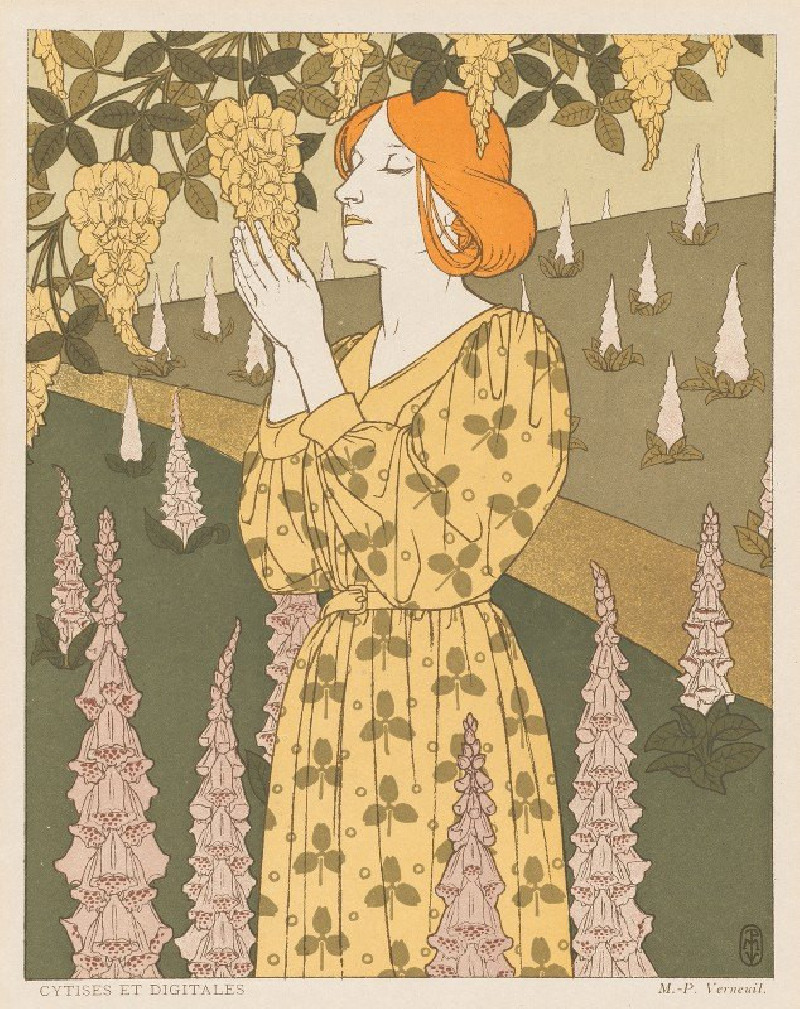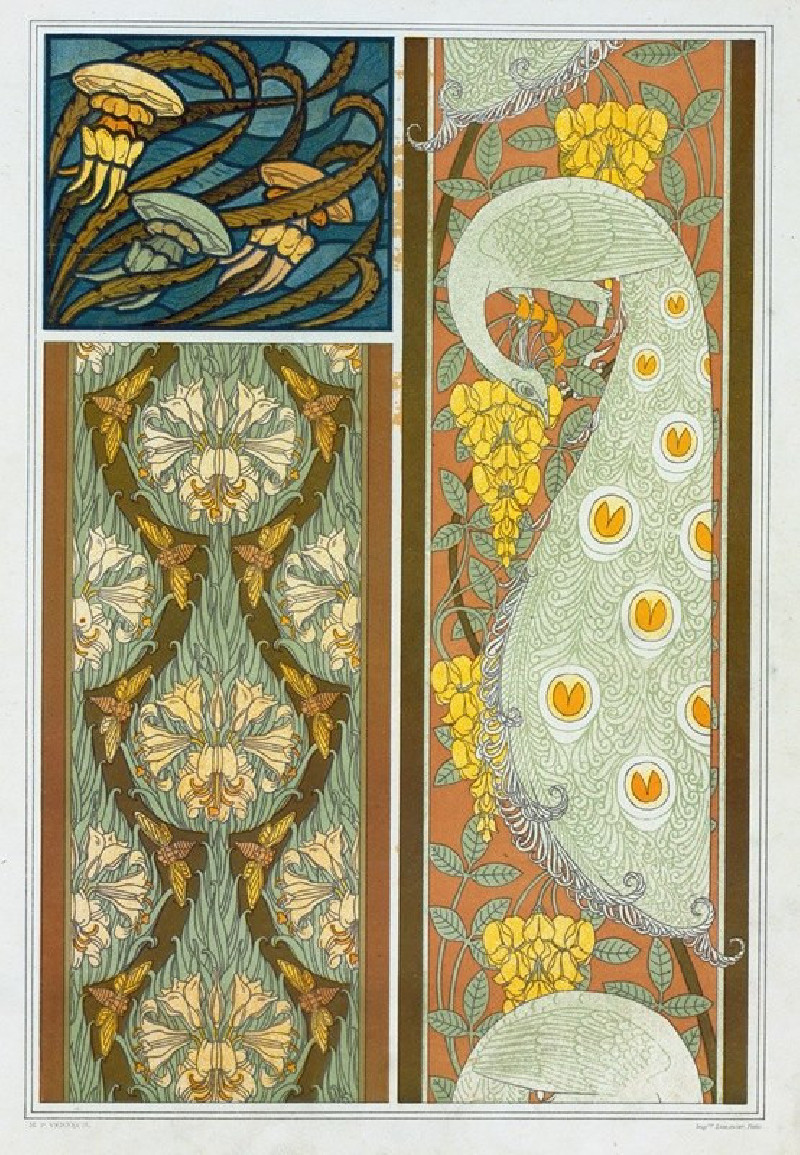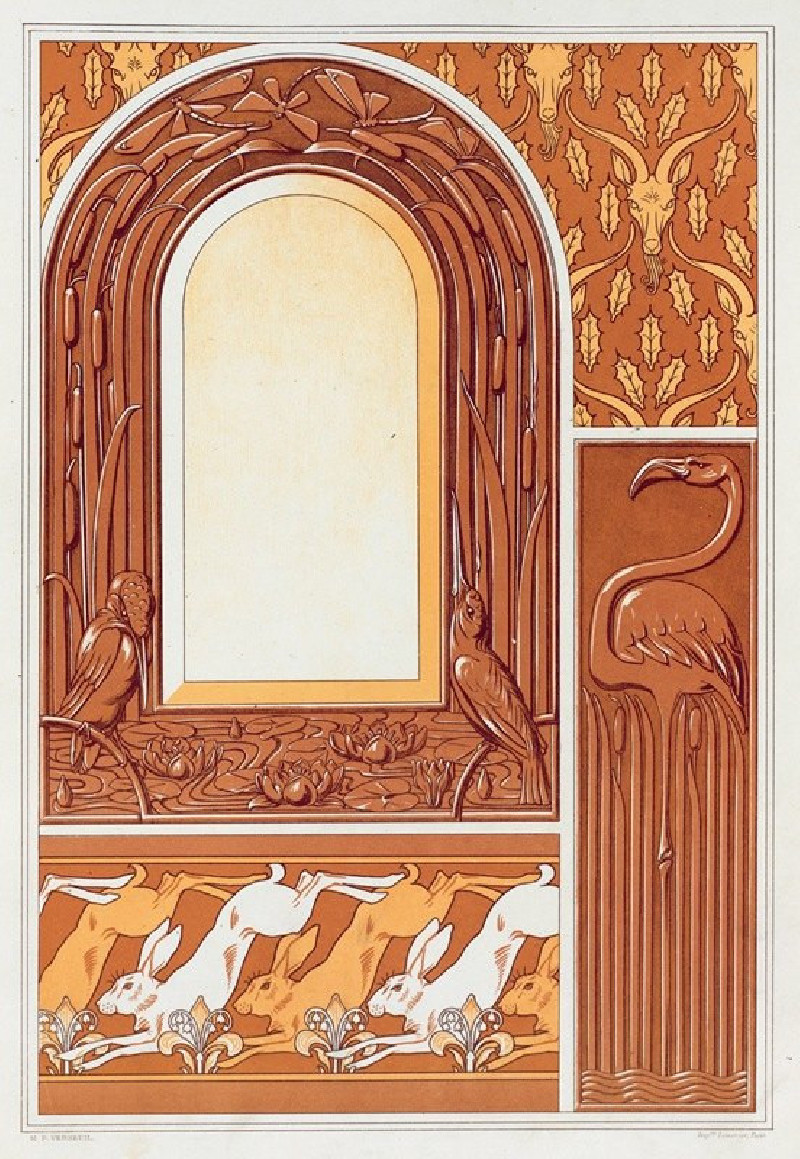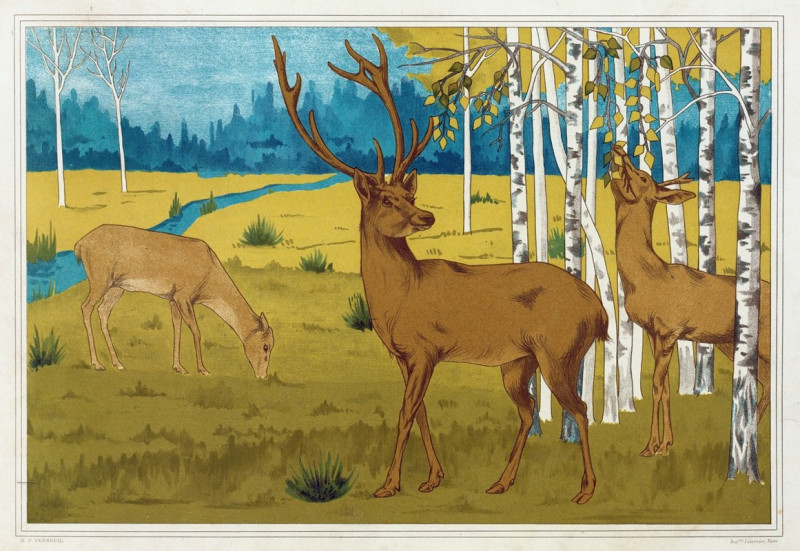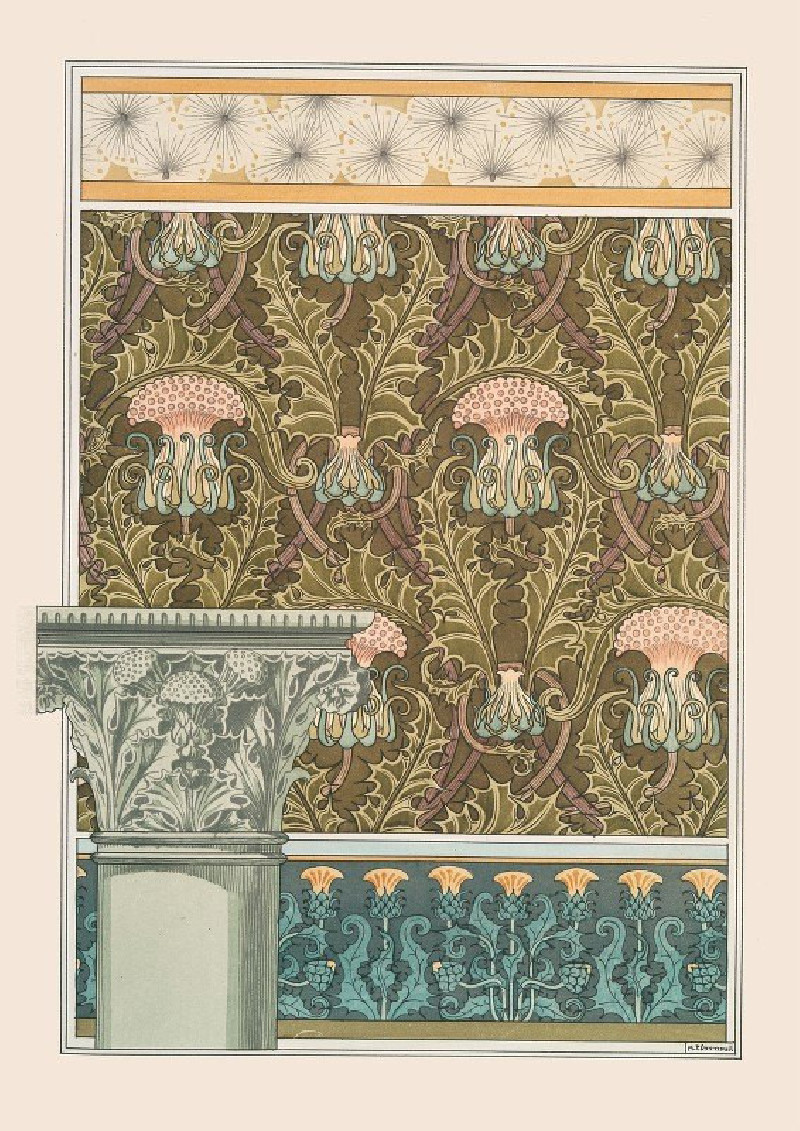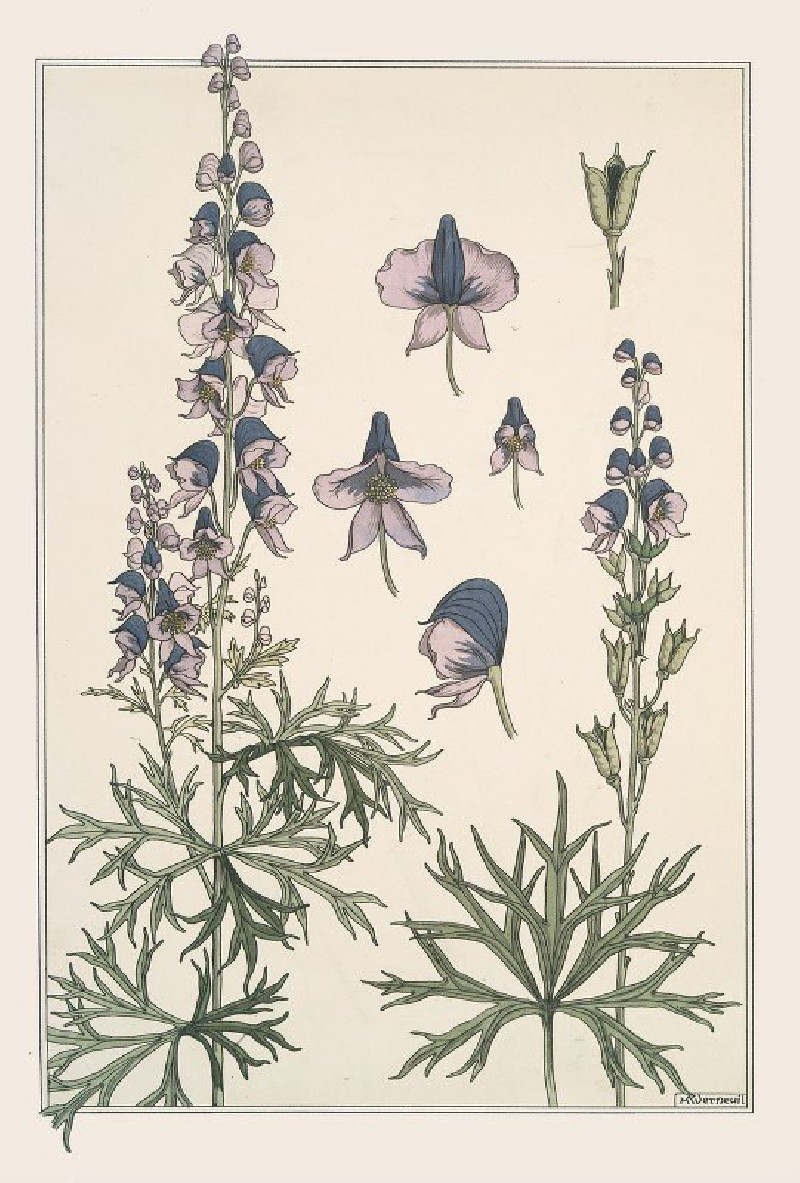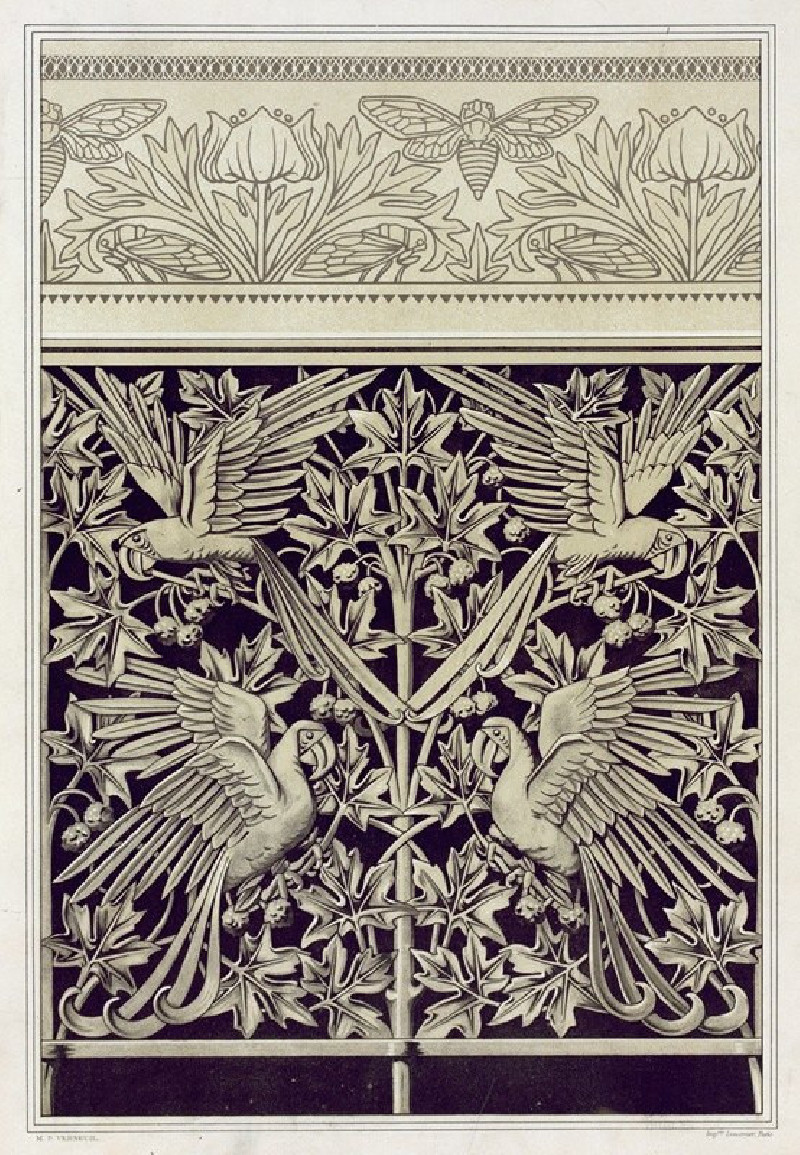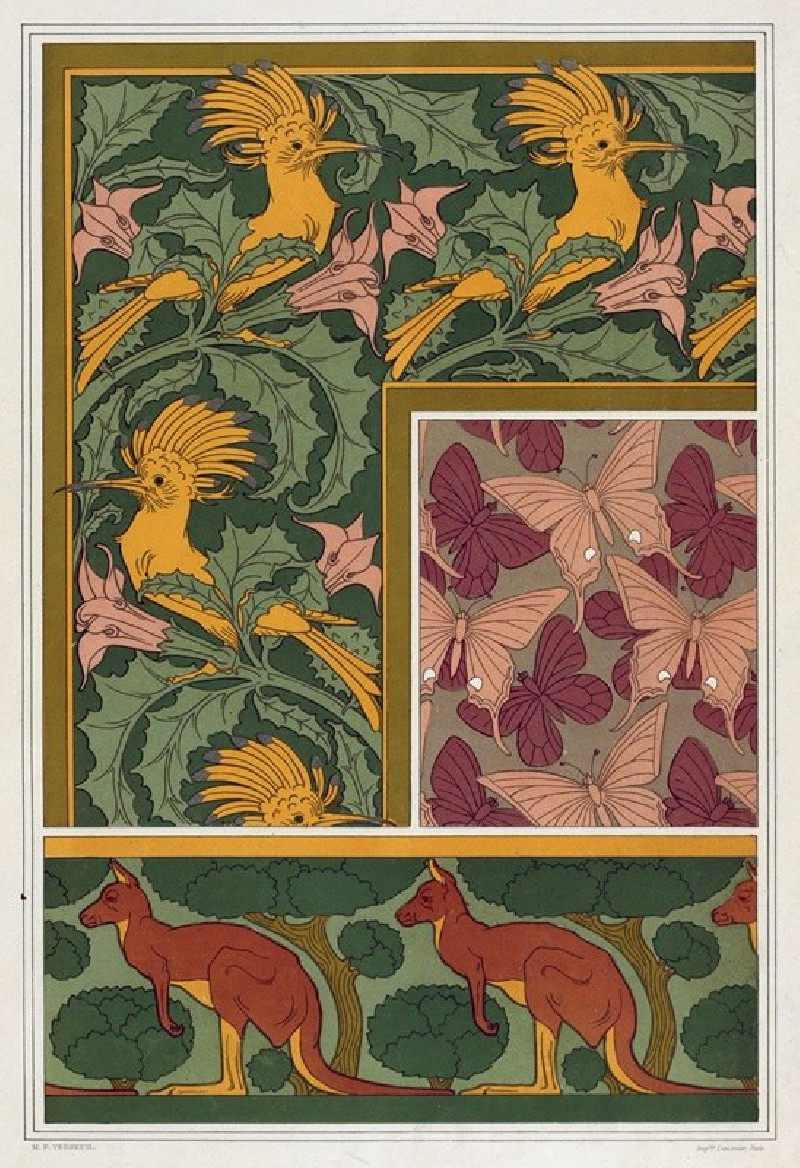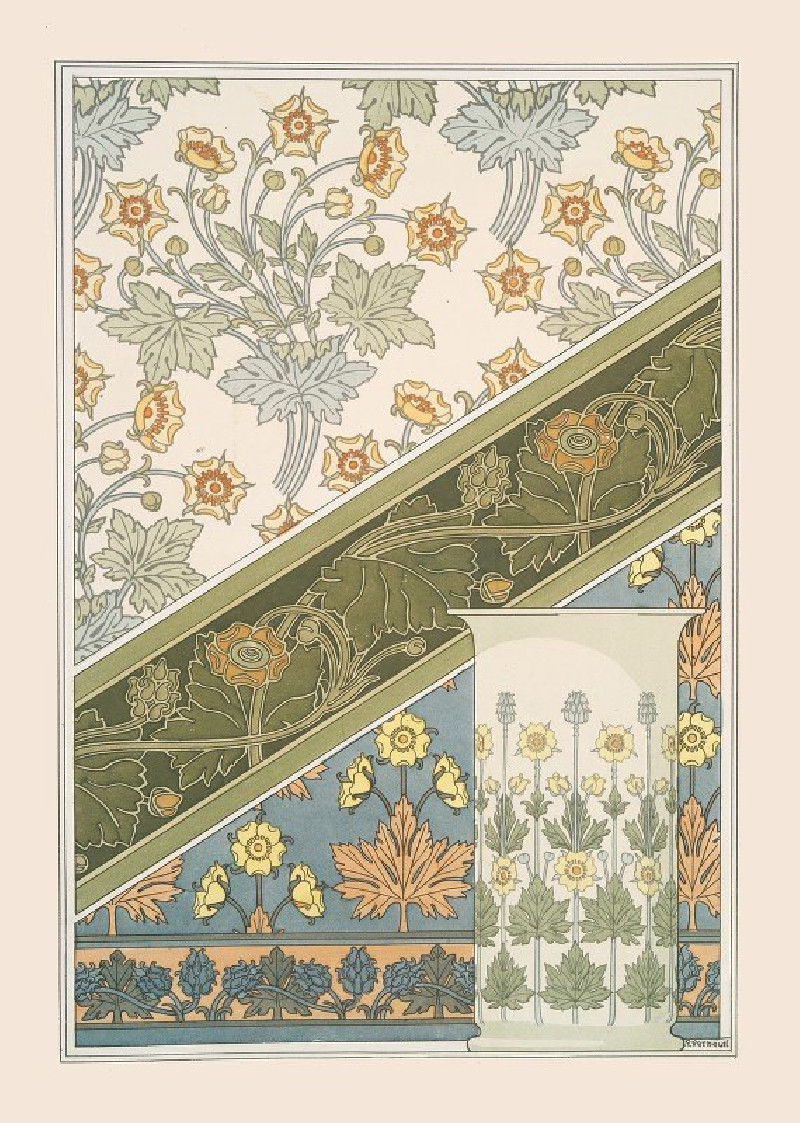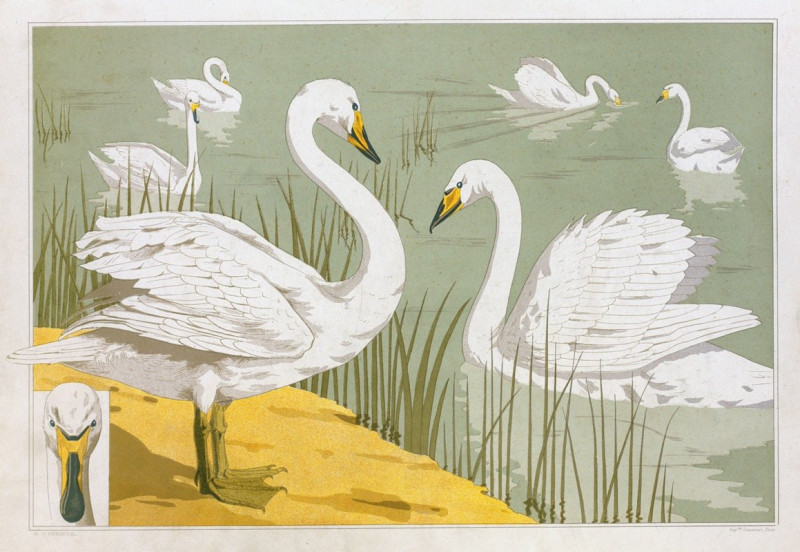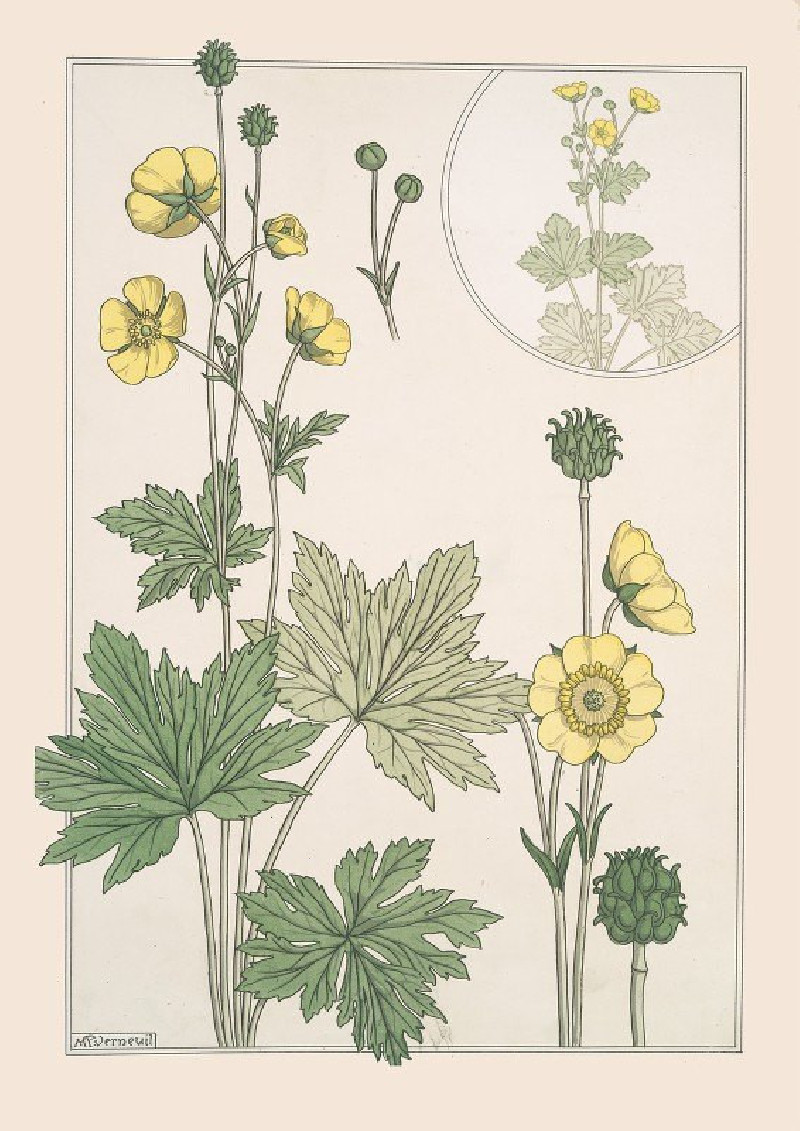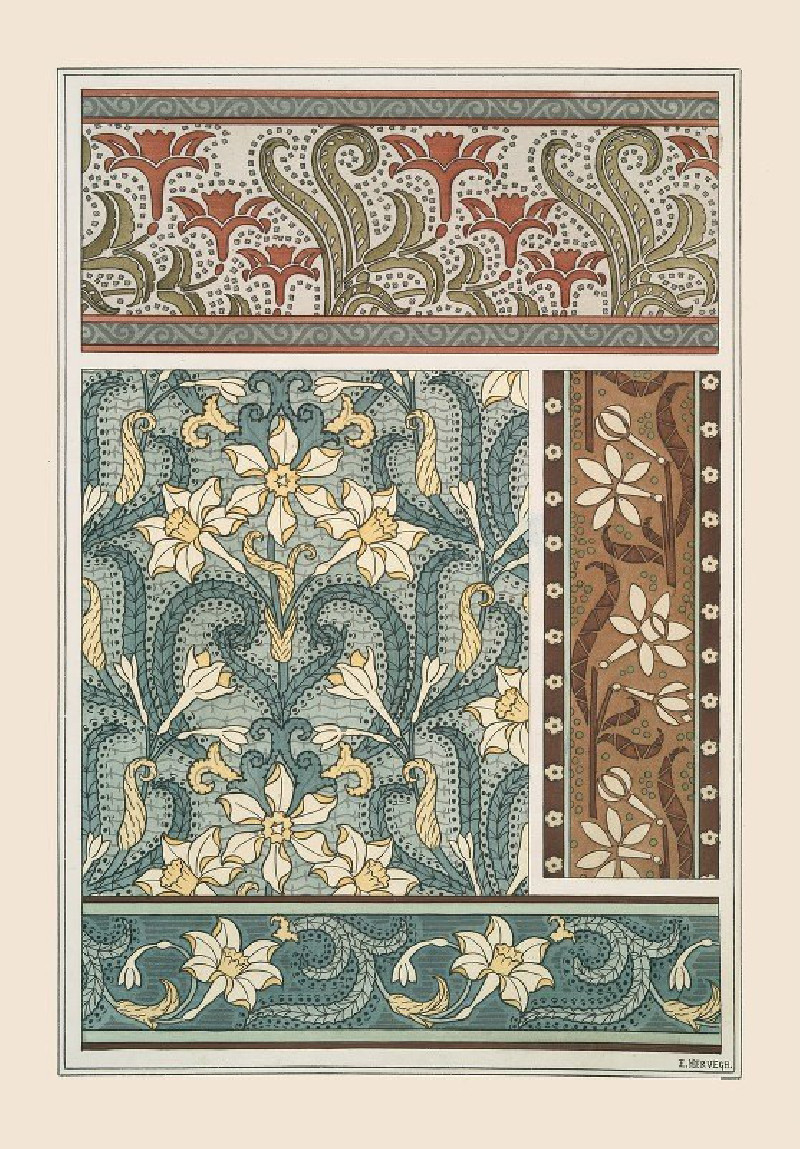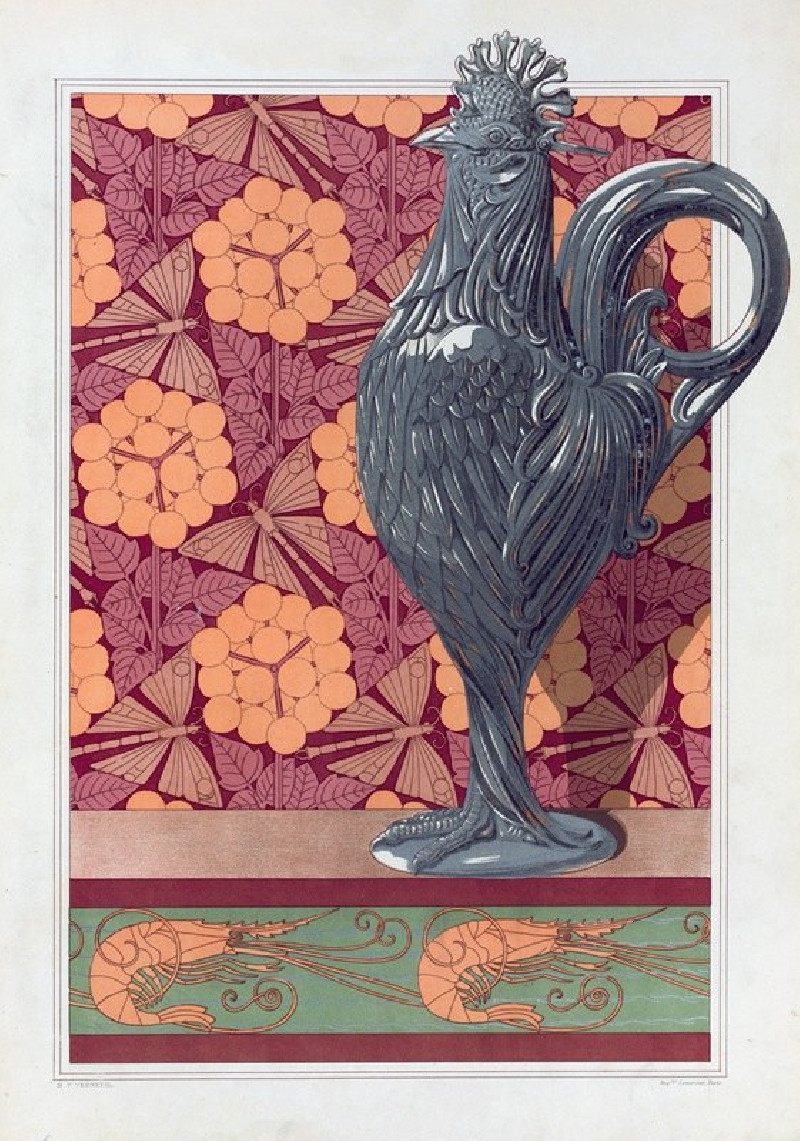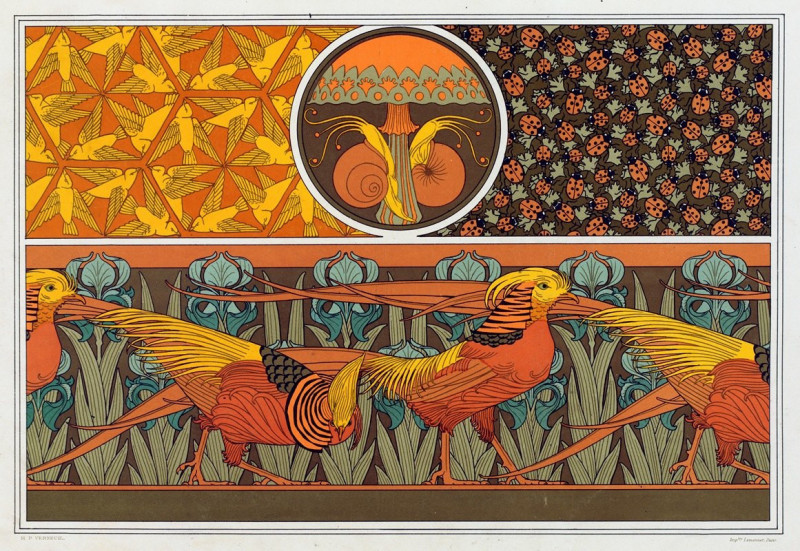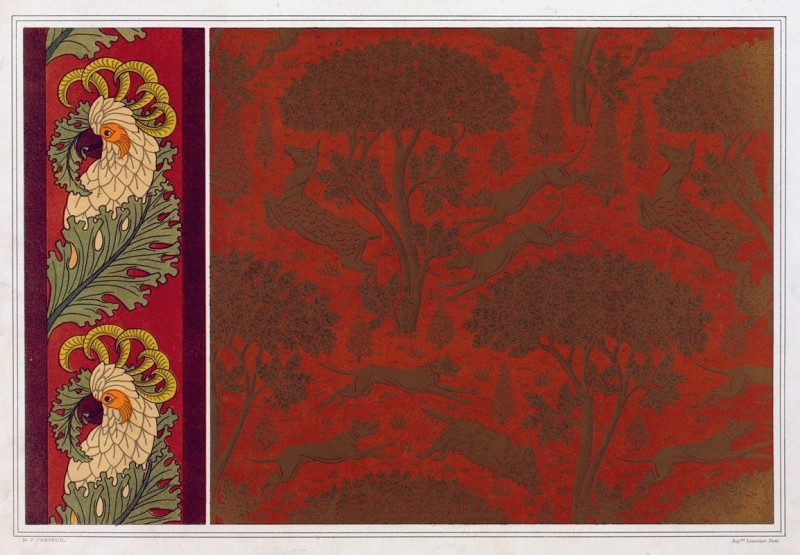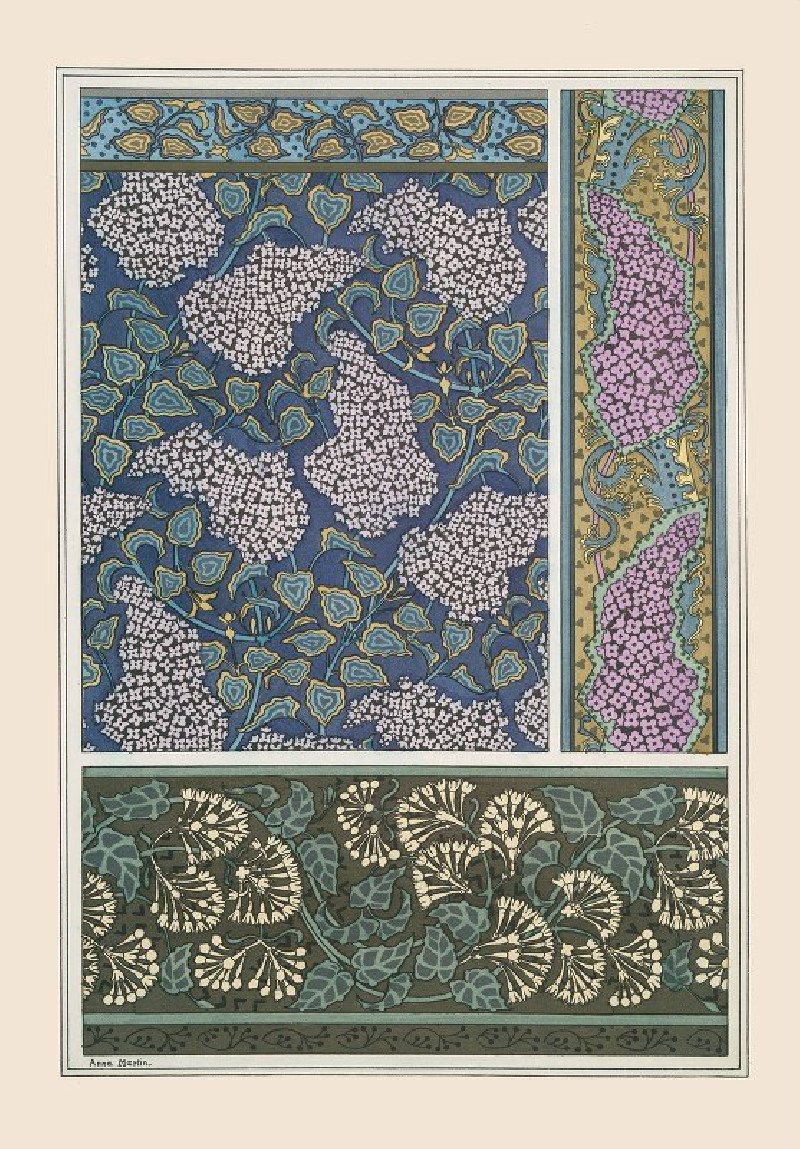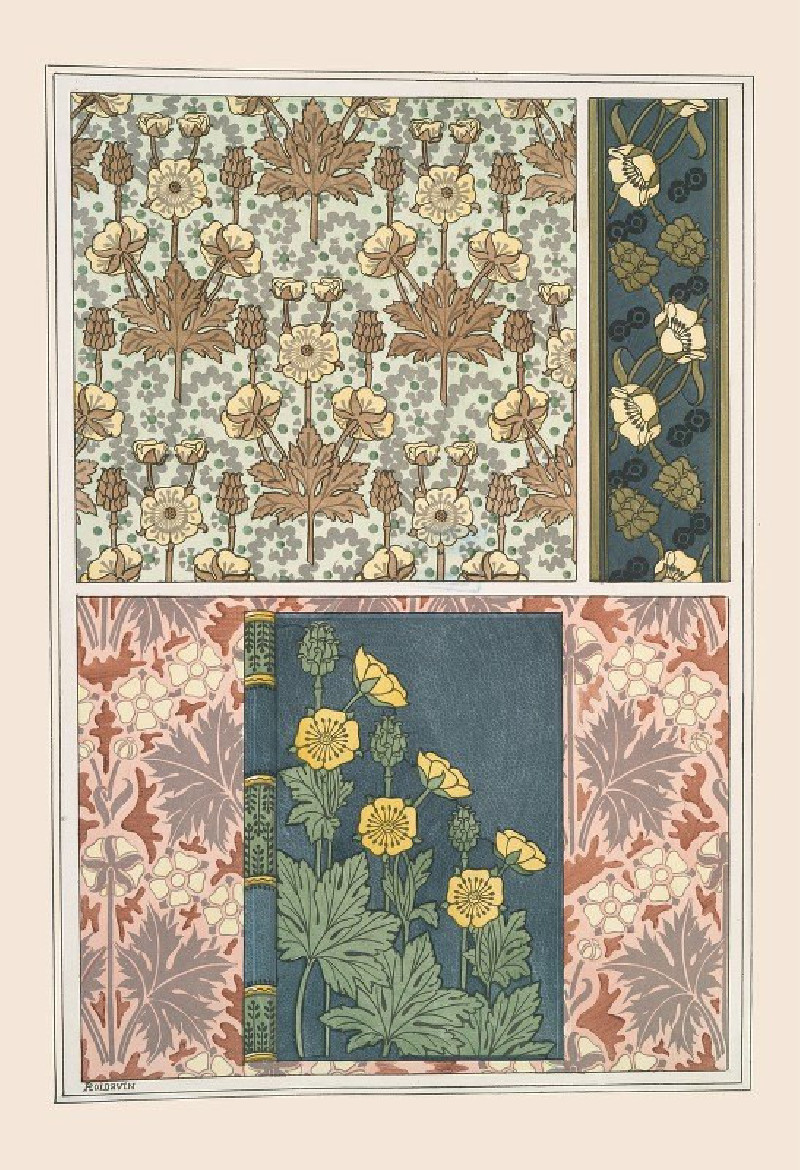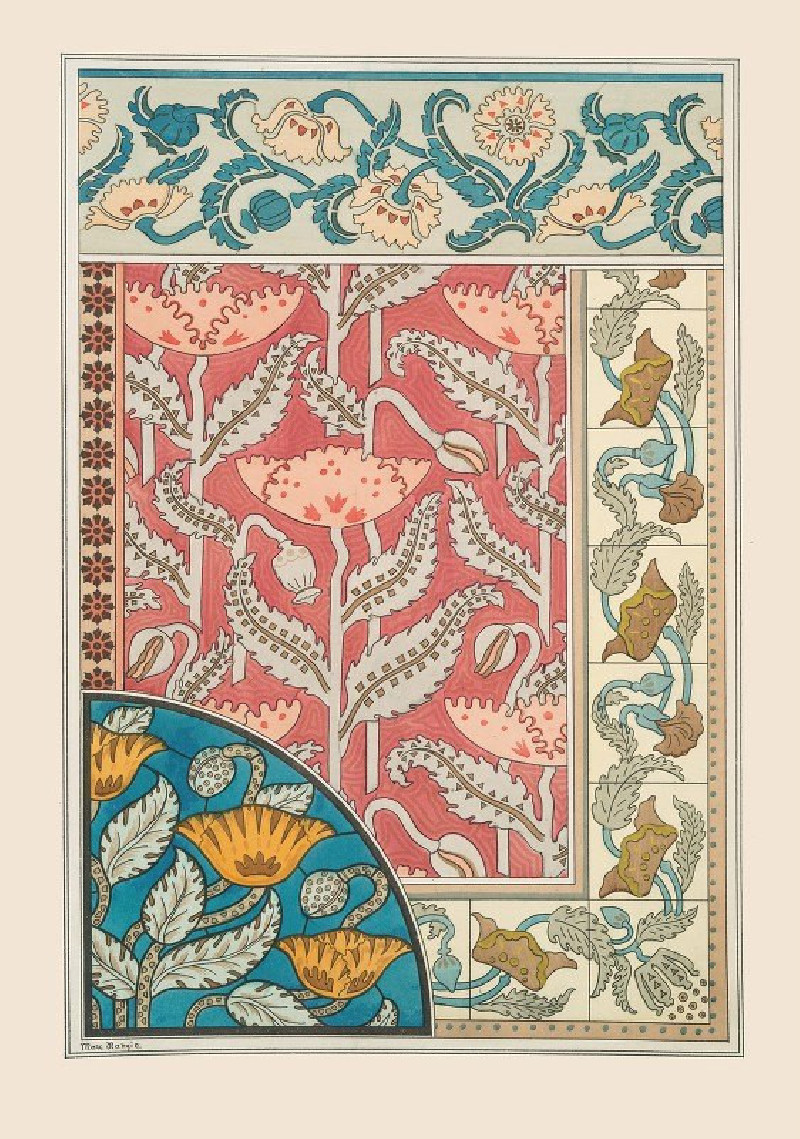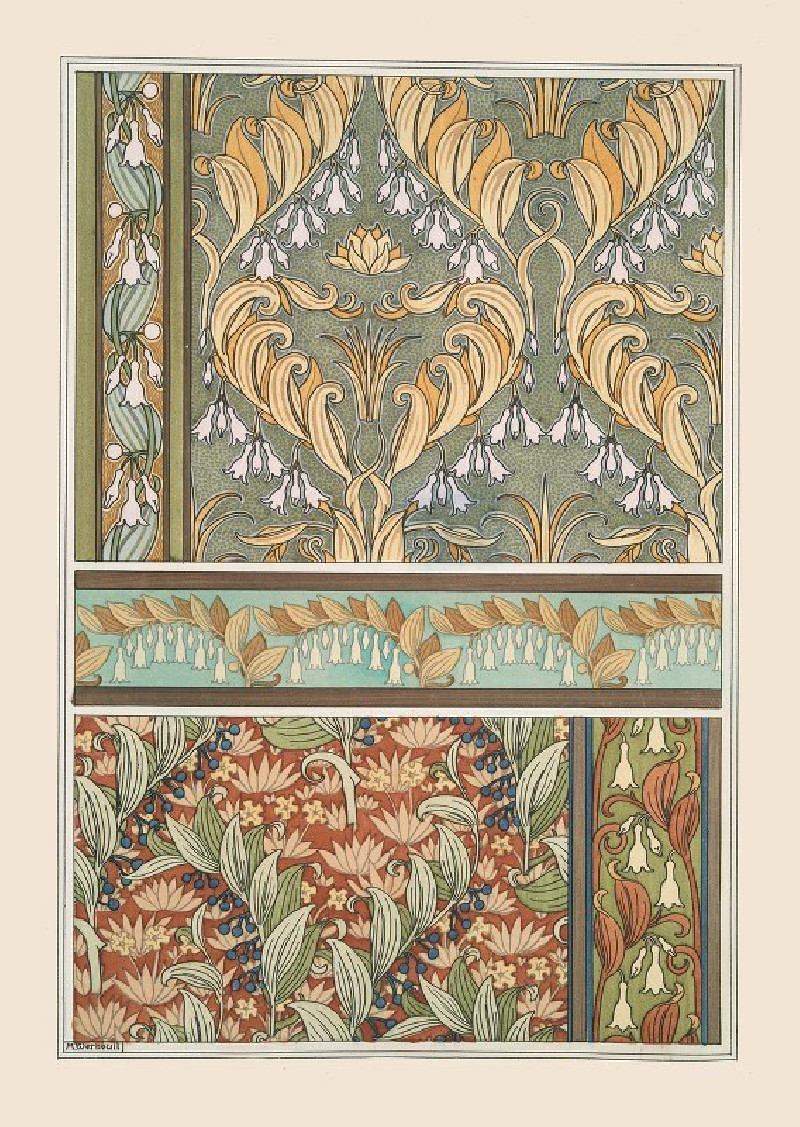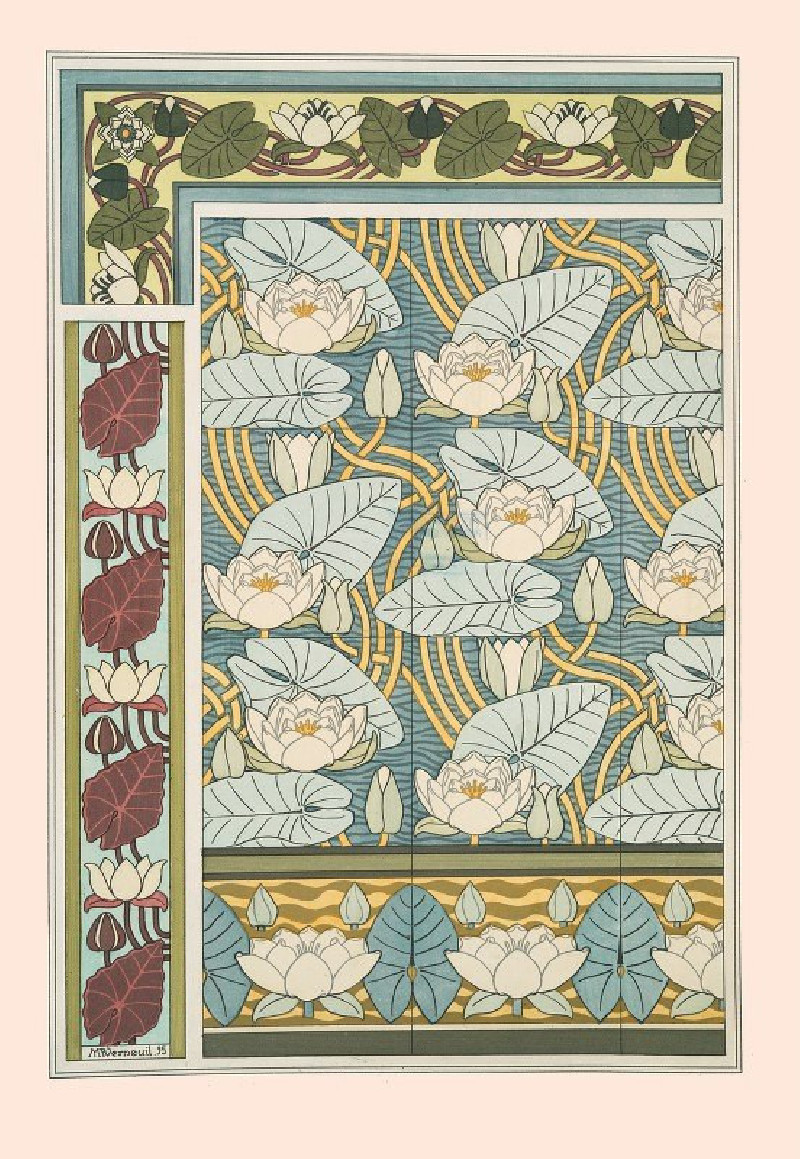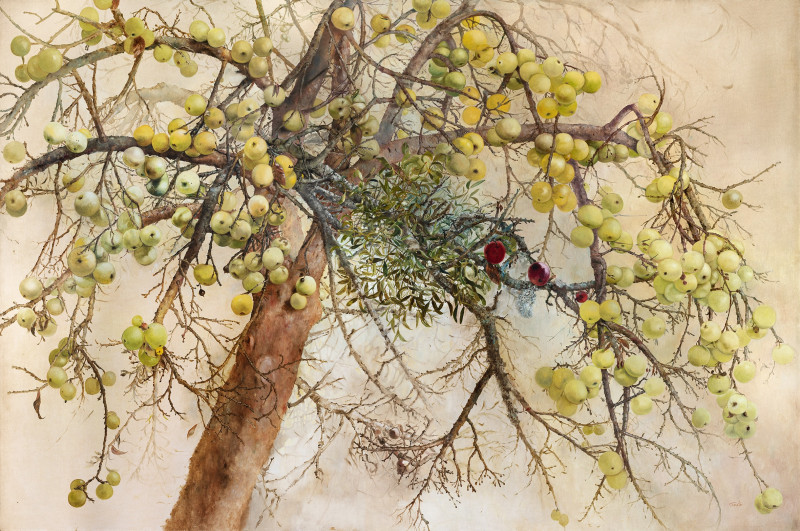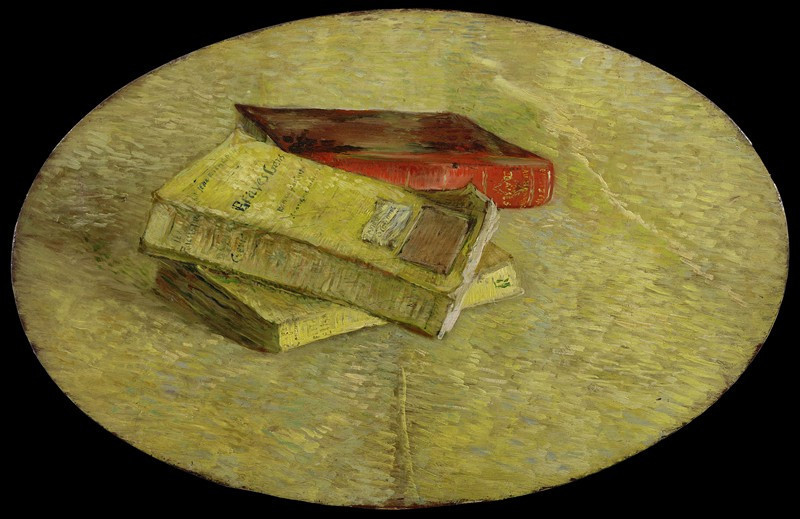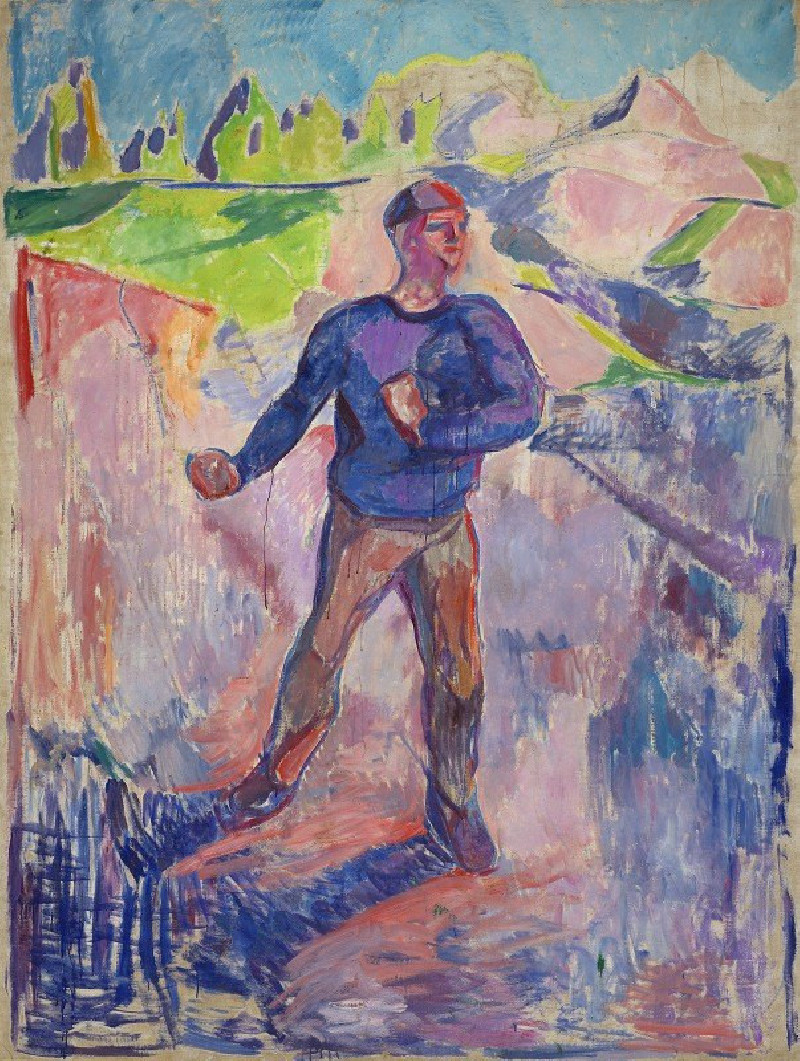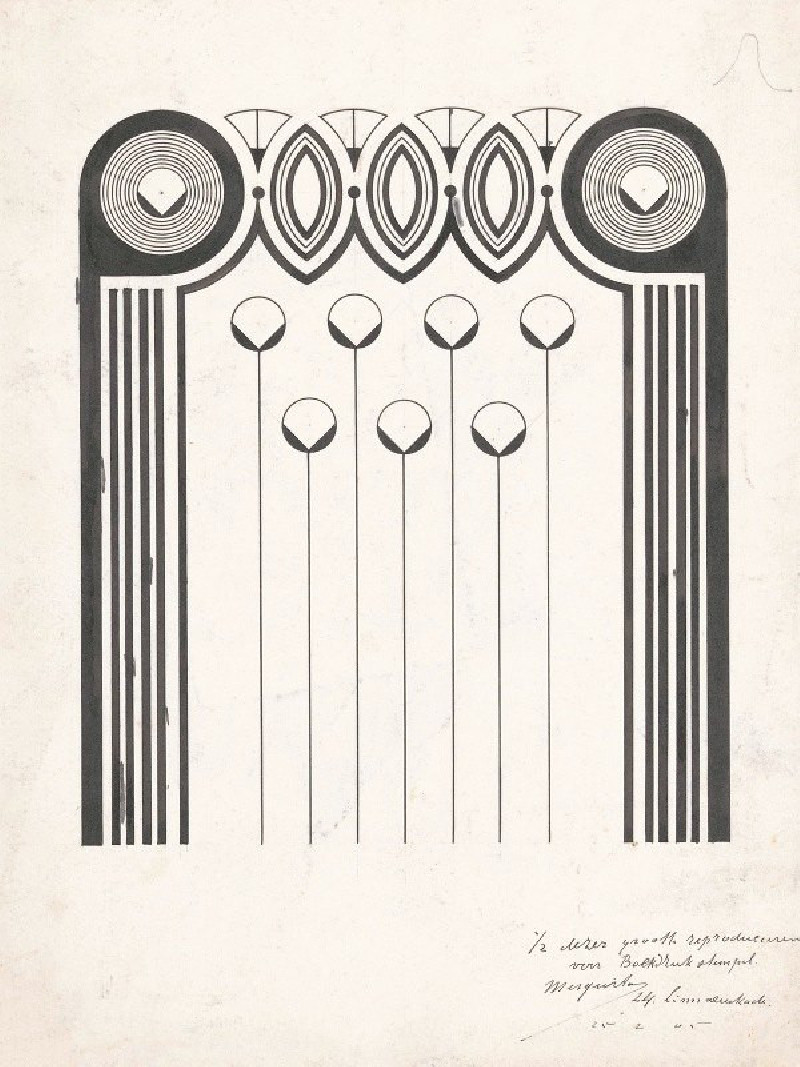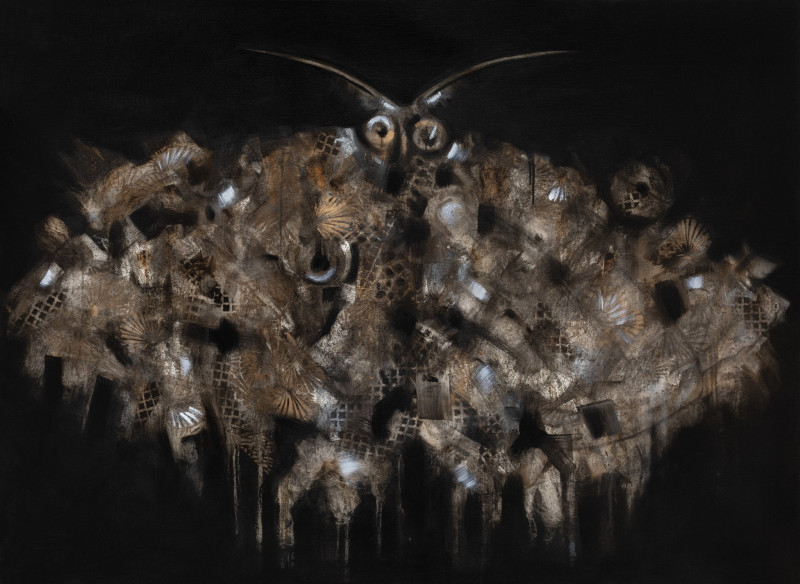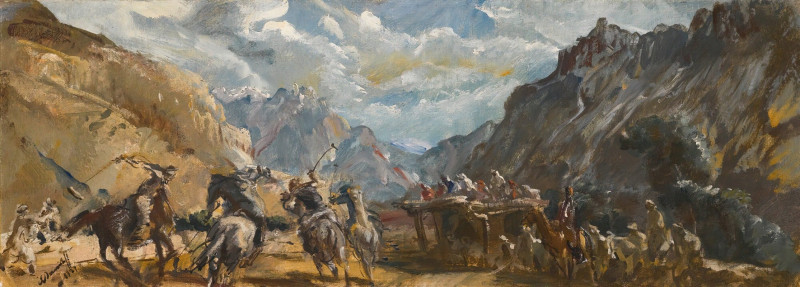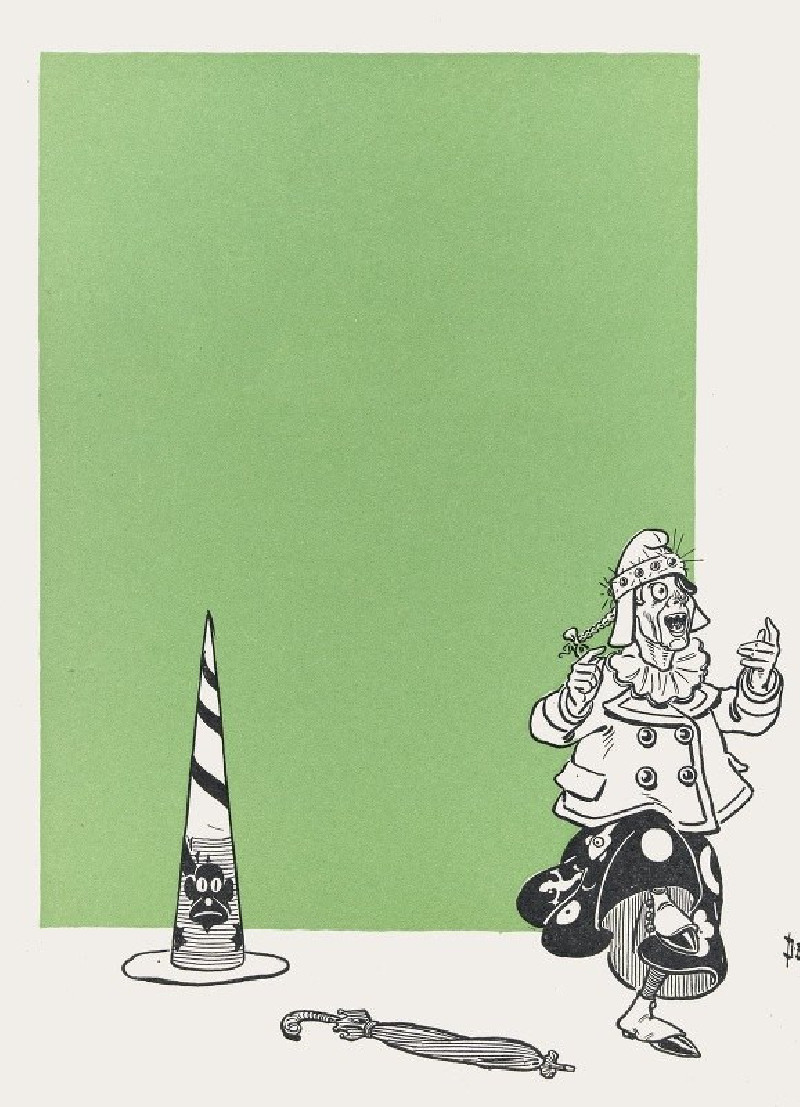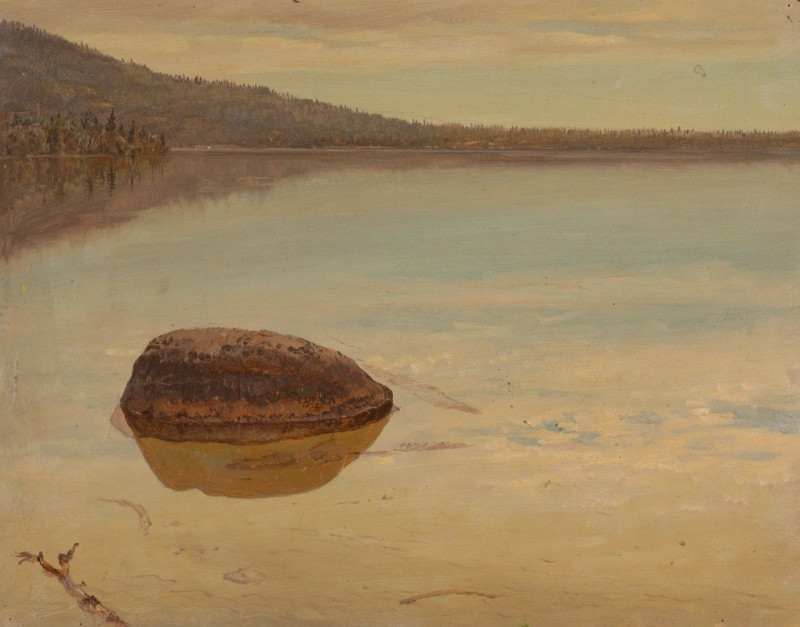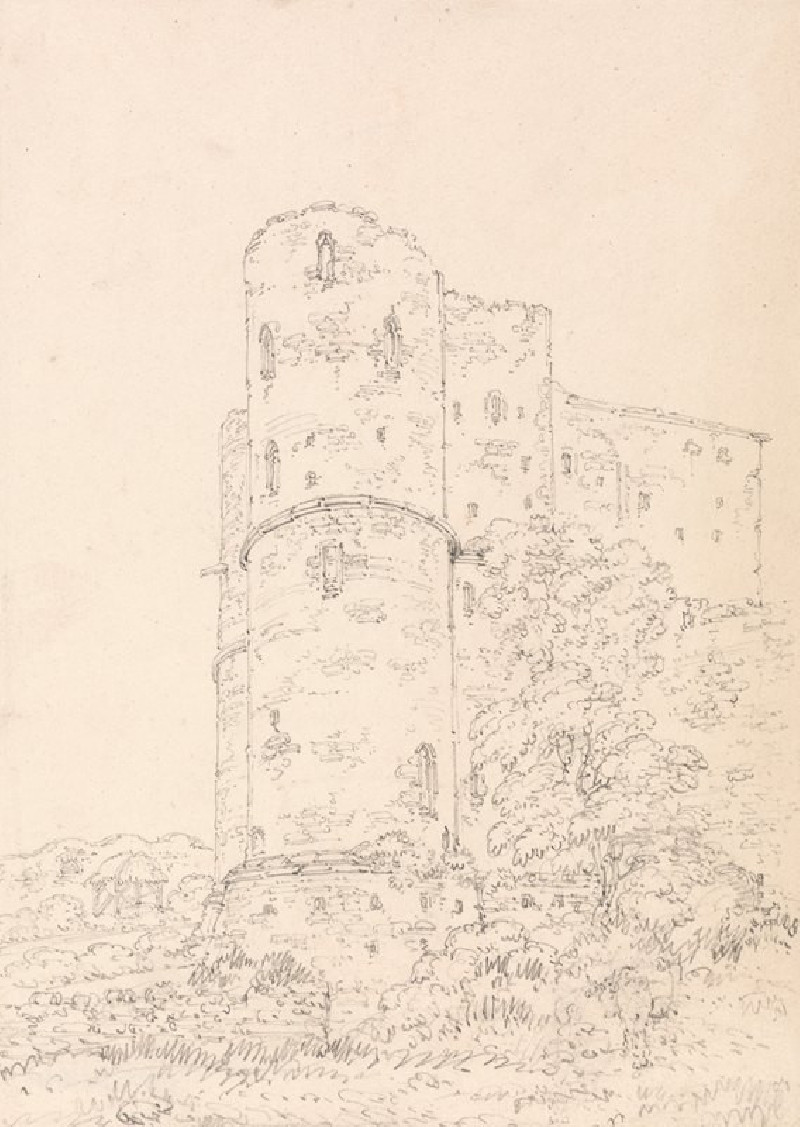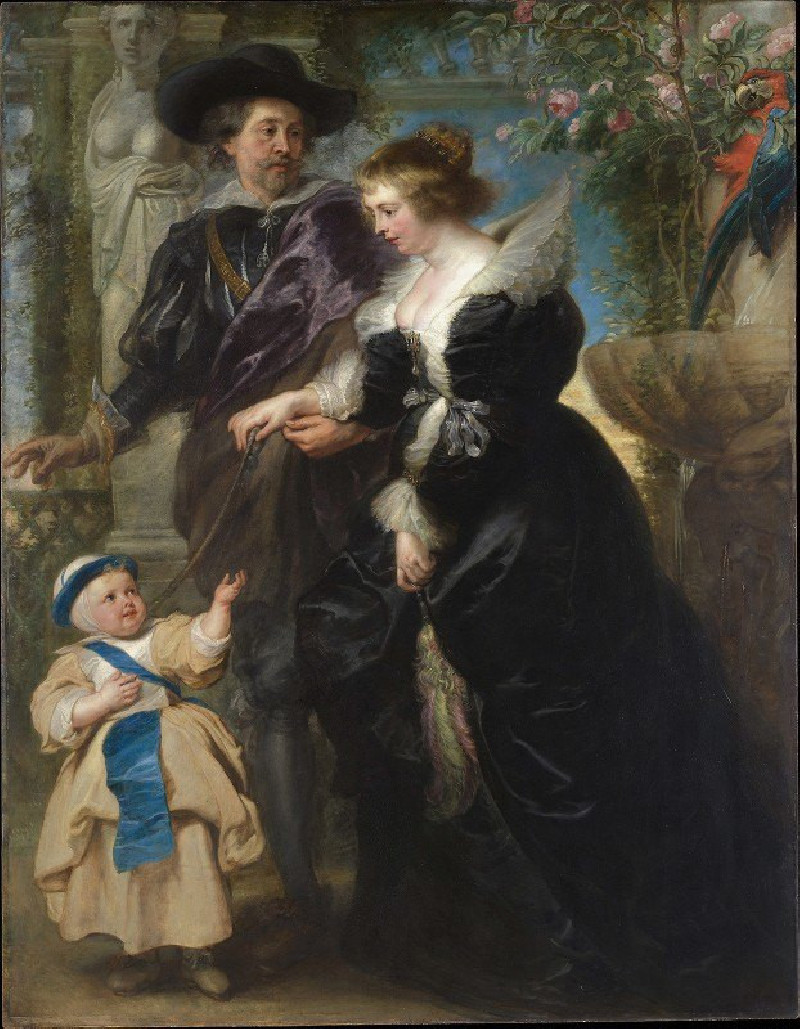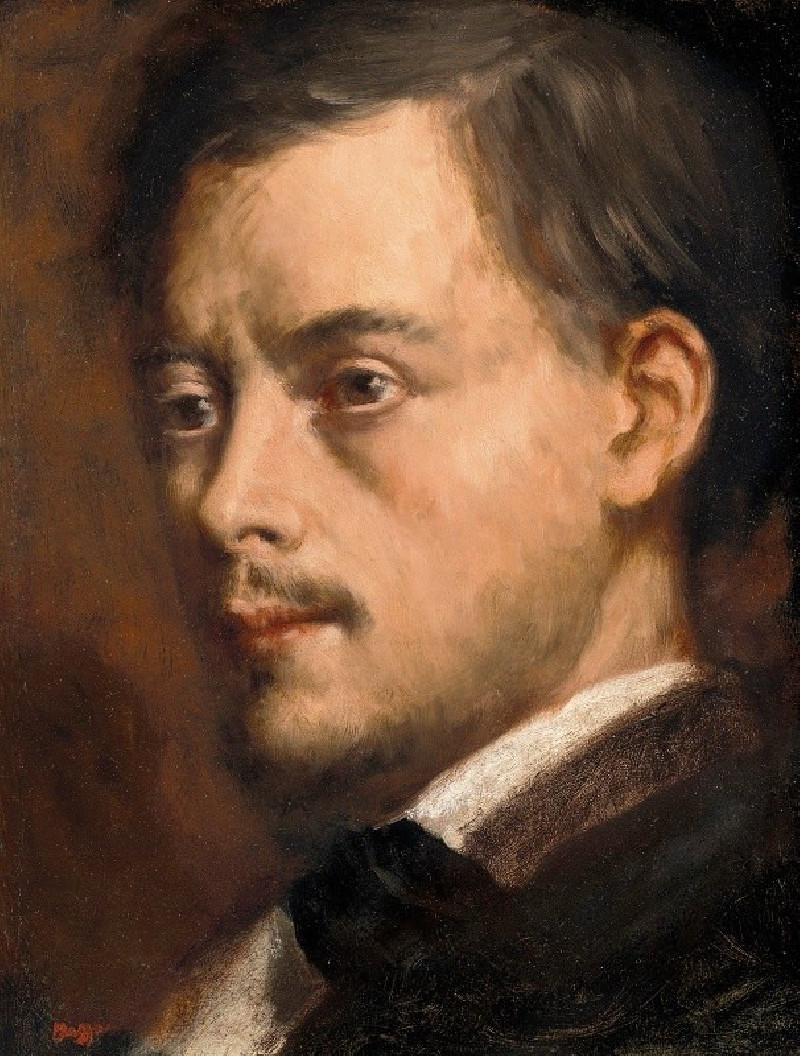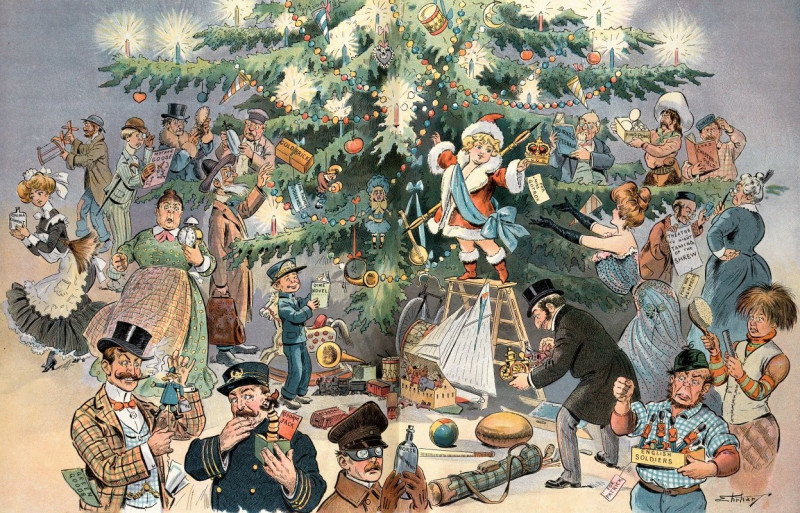Martins-pêcheurs et butome en ombelle, papier peint. Chevaux et arbres, bordure. (1897)
Technique: Giclée quality print
Recommended by our customers
More about this artwork
Dive into the enchanting world of Maurice Pillard Verneuil's masterpiece "Martins-pêcheurs et butome en ombelle, papier peint. Chevaux et arbres, bordure." Created in 1897, this work is a beautiful exemplar of Art Nouveau design, showcasing the artist's profound connection to nature and his innovative aesthetic approach.Upon viewing the upper section of the painting, one is immediately drawn into a serene and lush riverscape populated by vibrant kingfishers (martins-pêcheurs). These dynamic, blue-winged birds are artfully captured in mid-flight, their forms echoing the flowing, organic lines characteristic of Art Nouveau. The scene is set against a backdrop of tall, slender reeds and broad, floating water lilies (butome en ombelle), which provide a rich contrast of vertical and rounded forms, all intertwined in a harmonious natural ballet.Moving to the lower section, the artwork transitions into a more dramatic and stylized motif featuring mythical horses amidst a forest of trees and blooming chrysanthemums. This border section is distinguished by a striking combination of red and green hues, which enhance the dynamism of the spirited horses and the lush, decorative foliage that surrounds them.Maurice Pillard Verneuil’s unique ability to blend vivid wildlife elements with stylized decorative designs is on full display in this painting. This wallpaper design not only embellishes the interior space but also invites the viewer to contemplate the beauty and fluidity of the natural world intertwined with human creativity.
Delivery
Returns
Maurice Pillard Verneuil was a French artist and decorator in the Art nouveau movement. He was born in Saint-Quentin, France. Maurice Pillard Verneuil learned his trade from the Swiss designer Eugène Grasset. Maurice Pillard Verneuil then went on to become a well-known artist and designer. He was inspired by Japanese art and nature, particularly the sea. He is known for his contribution to the art deco movement and, in particular, his use of bold, floral designs in ceramic tiles, wallpapers and other furnishing textiles.




